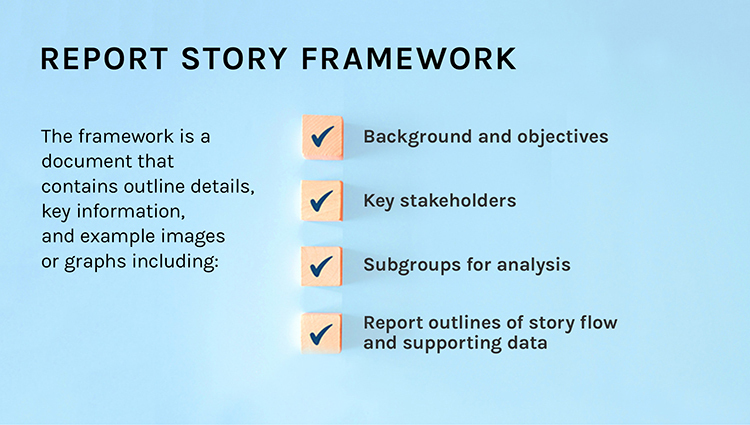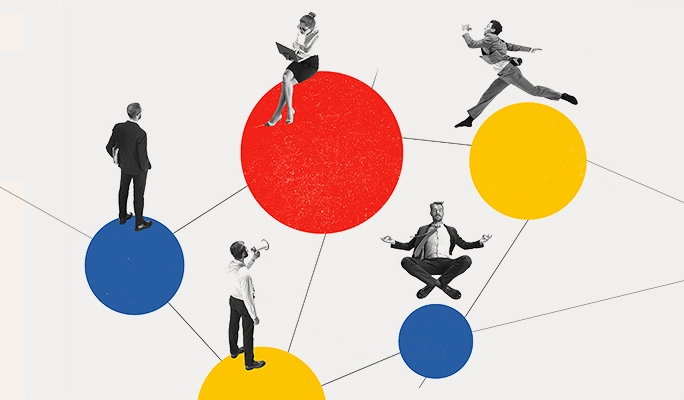In the first blog post in our strategic storytelling series, Paul Donagher reinforced why stories are critical. In addition to being a core aspect of the human experience, people remember information conveyed with stories up to twenty times more than if they were given a list of facts or set of charts to review. Report stories that speak directly to stakeholder audiences by delivering actionable insights in a clear, engaging narrative have a deep impact, helping brands make key decisions.
Establishing a framework before the final report.
Developing a strong narrative takes time. As an avid reader, what I’ve learned from studying my favorite authors is that the best stories usually come from a foundation of deep planning. Report stories require a similar planning approach. Each research study begins with a focus on the stakeholder audiences and the insights they are trying to uncover. The next step is to plan and build a report story framework that brings focus and clarity to the project, establishes a plan, builds flexibility into the report creation process, and makes it easier to tell an organized, powerful story to stakeholders.
The report story framework is a detailed document that outlines key considerations and the overall flow of the report, playing an important role in guiding this narrative from the start. A framework that includes each of the following elements is more likely to keep teams focused on project goals and result in a thorough and story-driven report.

A story framework:
- Serves as a project touchstone to keep teams focused: The framework provides an opportunity to revisit the hypothesis, key research questions, and any new issues that have emerged since the design phase, keeping everyone focused on the core issues to be explored in the report story.
- Provides organization: The framework serves as a map that helps to distill the research into key themes or sections of the report story.
- Helps to align goals: There are often many directions a report story could take. The framework serves as a reminder for the story’s central themes and provides guidance on the level of detail the report will require based on the stakeholder audiences that will use it.
- Acts as a built-in checklist: Mapping out an initial plan for the analysis ensures thorough coverage of all angles of reporting from specific questions to themes, to key groups for analysis, leaving no stone unturned for final reporting.
- Saves time: When the final data or inputs are in, the results can efficiently match up with the framework outlines and objectives.

Through careful planning, the report story framework becomes the bellwether that keeps the project on track, delivering crisp insights in a compelling report story that helps the brand make key decisions and activate growth strategies.”
Using the framework to navigate pivots.
Even the best writers and most thorough planners can be surprised by the direction the story takes once the data is in. Sometimes the data may not fit into the planned story framework, suggesting a story that is compelling, but different from what was initially expected. In these situations, the story framework is even more useful — it refers everyone back to the stakeholder’s key questions to keep analysis and teams focused on the project’s core goals.
Through careful planning, the report story framework becomes the bellwether that keeps the project on track, delivering crisp insights in a compelling report story that helps the brand make key decisions and activate growth strategies.
Christine delves into the six key elements of a framework in this video.
What strategic issue is your brand facing?




